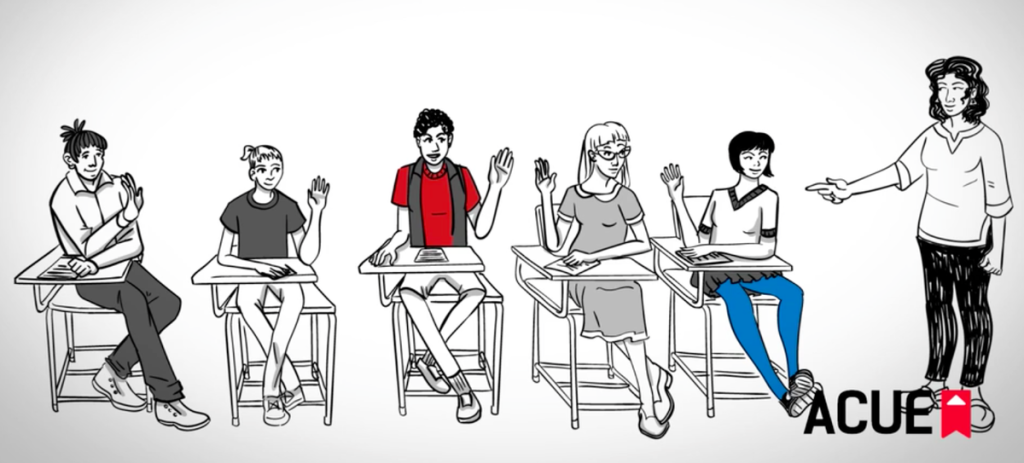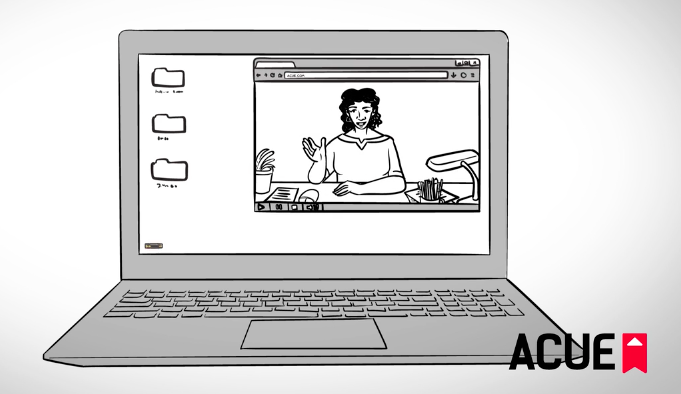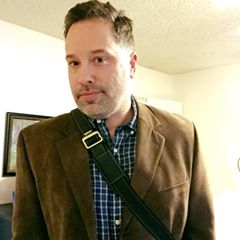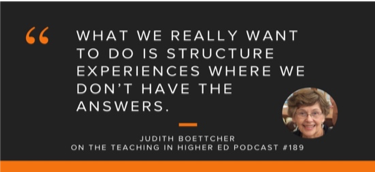
News Roundup: From Active Learning to Learning from Mistakes
This week, new teaching strategies to support students, from active learning to learning from mistakes.
| Sign up for The ‘Q’ Newsletter for weekly news and insights. |
10 Key Points About Active Learning
Students may be just as uncomfortable about active learning as instructors are, Cathy Davidson has noticed, but they always deliver, often exceeding her expectations. Davidson describes other principles she wishes she knew before incorporating active learning into her courses—from how unnatural all learning is to the ease of grading in this kind of course. (Inside Higher Ed)
The Benefits of Doing It Wrong
David Gooblar describes how students’ misconceptions can become a road map that guides instructors on which concepts they should spend more time addressing. He also advocates assigning students to actively make mistakes in particular assignments, because erring becomes more acceptable, and the exercise will teach them the real rules. (Vitae)
Three Ways to Actually Support Nontraditional Learners
Nontraditional students comprise nearly 60 percent of the United States’ undergraduates, according to Laura Ascione. She suggests strategies for meeting the learning needs of these students, who may be older, working full time, financially independent, or military veterans, such as creating more engagement between higher education and the workforce. (eCampus News)
Would Students Retain More if Professors Dialed Back the Pace?
Barbara King discusses a slow teaching approach in which instructors look closely at certain concepts or ideas, rather than cramming too much material into a semester. Citing an essay by Paula Marantz Cohen and an article by Julie Beck, she opines that students may become more enthusiastic about and engaged with the material through this approach. (NPR.org)
What Higher Education Leaders Need to Know About Retention
From student success centers, to building relationships with students, to using mobile apps to track course progress, Education Dive rounds up top strategies to improve student retention in higher education. (Education Dive)
Helping Students See the Connections
Since academic work can feel disconnected when students are taking many different courses, at the end of the semester Laura Behling asks students to share how her literature class has encouraged them to discuss material they’ve learned in other courses. She also tasks them with making broader connections between the material and their lives and larger world. (Inside Higher Ed)
Partner News
ACUE Presents at K-State’s Faculty Exchange Celebration
Kansas State University celebrated the 20th Anniversary of the Faculty Exchange for Teaching and Excellence (FETE) on January 26th. FETE was founded in 1997 by Kauffman Chair Dr. Ann Stalheim-Smith and is supported by K-State’s Teaching and Learning Center. As part of the event, Carmen Macharaschwili, an academic director at ACUE, presented on “Critical Issues for Quality Teaching and Learning: Then and Now,” highlighting K-State instructors’ dedication to supporting their students and commitment to evidence-based teaching as “ACUE Fellows.”
Purdue University Northwest: Associate vice chancellor focuses on impact (Purdue University Northwest Pioneer)
Bonni Stachowiak: Forget ‘Sage on the Stage,’ and ‘Guide on the Side.’ The Challenges Of Teaching In the Trump Era (EdSurge)
Eduardo Padrón: Miami Dade College president earns Amicus Poloniae Award (Miami’s Community Newspapers)

A Research-Based Methodology for Evaluating the Efficacy of Faculty Development on Student Outcomes
How do we know? It’s the epistemological question that animates our entire enterprise and has particular relevance for student learning. How do we know if students are learning what we expect? And how do we know if we’re refining our teaching in ways that promote deeper levels of learning and persistence to graduation and that prepare students for purposeful lives and careers?
The importance of these questions has been elevated in recent months by numerous reports calling on higher education to prioritize undergraduate teaching, in STEM and other fields, and ensure that we prize the quality of education alongside national attention to the quantity of degrees awarded. Leadership by the faculty development community also brought these issues to the forefront, making the ways we assess impact a focus of their annual conference.
As our contribution to this important conversation, ACUE is pleased to release Connecting the Dots: A Proposed Accountability Method for Evaluating the Efficacy of Faculty Development and Its Impact on Student Outcomes. The paper presents a research-based approach to evaluating the effects of faculty development on changes in teaching practices and the consequent impact on both student and institutional outcomes. ACUE developed and refined this approach with our college and university partners nationwide, where it is in use to estimate the effects of faculty credentialed through our courses in effective teaching practices.
The proposed six-level evaluation method is grounded in the industry training model developed by Kirkpatrick and Kirkpatrick and informed by Guskey’s and Hines’s application to educational settings. This framework recommends evaluating changes across six successive levels: in faculty engagement, faculty learning, and faculty implementation of evidence-based practices followed by changes in student engagement, course-level student outcomes, and, ultimately, institutional outcomes.
Given the complex nature of social science research, we recognize that no approach can fully control for the many influences on a students’ college career. But the heightened accountability on higher education to improve organizational outcomes requires that we analyze teaching and learning with as much sophistication as any other research agenda. With today’s proposed methodology, we seek to further demonstrate the fundamental connection between teaching and learning and reaffirm the indispensable contribution made by our faculty toward their students’ success.

ACUE at AASCU 2018: What will it take for the student success agenda to succeed?
To create informed citizens and help students develop the skills necessary for success in an increasingly global workforce, institutions continue to explore new programs, policies, and practices. Yet how can colleges and universities stay focused on preparing students amidst these challenging times of breaking news alerts, political protests, and social change?
Navigating the social and political climate is the central theme explored by the American Association of State Colleges and Universities (AASCU) at their 2018 Academic Affairs Winter Meeting: Public Universities in Challenging Times. This meeting will focus on the following critical areas:
• Engaged citizens
• Career preparation
• Teaching and learning
• Faculty roles
• Student success
At the meeting, ACUE and our institutional partners will tackle questions from across the areas of teaching and learning, faculty roles, and student success. During an interactive lunch session, “What will it take for the student success agenda to succeed?” Dr. Penny MacCormack, chief academic officer at ACUE, Dr. Amy Chasteen Miller of the University of Southern Mississippi, and Dr. K. Laurie Dickson of Northern Arizona University will facilitate an analysis of popular interventions intended to improve student outcomes and share how USM and NAU are promoting evidence-based teaching practices as a strategic driver of change. By focusing on quality instruction, the presenters will explore what institutions must do to make the student success agenda truly succeed.
We hope to see you in San Antonio on Friday, February 9th at 12:45pm for a meaningful discussion.
Visit AASCU’s 2018 Academic Affairs Winter Meeting website to view the full schedule of events.
Measuring Our Impact

News Roundup: Online Students and Career Services
This week, how to build relationships with online students and encouraging students to use career services.
| Sign up for The ‘Q’ Newsletter for weekly news and insights. |
Mission “Impossible”: Building Relationships with Online Students
Because online courses can lack the support that face-to-face learning facilitates, Cindy Miller suggests strategies for engaging students. She advises instructors to record video introductions and encourage students to upload pictures of themselves, as well as offer personalized feedback on assignments and reach out to individual students as needed. (The Evolllution)
Unions Won’t Solve Higher Education’s Problems
Underpaying adjuncts is a major issue in higher education, Paul Tice argues. Instead of unionizing, he proposes a model in which institutions separate teaching from tenure-related considerations, pay faculty based on student demand for courses, and increase the percentage of tuition dollars that goes to paying instructors. (The Wall Street Journal – Paywall)
Assessing Teaching: A Curriculum Theory Approach
Maha Bali proposes evaluating teaching through a curriculum theory approach, naming four theories: curriculum as content, curriculum as product, curriculum as process, and curriculum as praxis. She suggests methods instructors might use to reflect on their teaching through each approach. (ProfHacker)
Why Aren’t College Students Using Career Services?
Despite the increased emphasis on career preparation in higher education, many students aren’t using their career centers. According to Lalade Fadulu, student affairs staff should equip faculty with the knowledge to council students, since they may be more likely to interact with students regularly. Additionally, instructors should make their coursework more career focused. (The Atlantic)
The Power of an Integrated Business and Liberal Arts Curriculum
People need both liberal arts and professional education to succeed, writes Ronald K. Machtley. He describes how Bryant University’s Innovation and Design Experience for All program is attempting to combine these models. Created by faculty from the Colleges of Arts and Sciences and Business, IDEA challenges students to develop innovative ideas in professional scenarios. (University Business)
Lecture-Based Pedagogy and the Pitfalls of Expertise
The purpose of higher education is not to demonstrate one’s own expertise, writes Kevin Gannon, but to help students develop their own expertise. This means instructors shouldn’t rely exclusively on lecturing—this, Gannon argues, creates “learned helplessness” in students—but instead should combine lectures with discussion and other activities. (The Tattooed Professor)
Partner News
Northern Arizona University: Serving Traditionally Underserved Communities at NAU: Balancing Broad and Targeted Approaches (The Evolllution)
University of Nevada, Reno: UNR College of Business’ Online EMBA grows into renowned graduate program (Nevada Today)
ASU: What Jeopardy! and Teaching Have in Common

Faculty Spotlight: Michael Green, Film Expert and Jeopardy! Contestant
 This year, through a partnership with ACUE, Arizona State University is supporting and credentialing faculty members across eight of its schools and colleges, with faculty from physics to English literature, nursing to economics, and social work to women and gender studies. In our latest Faculty Spotlight, we hear from Michael Green, an ASU professor and ACUE alumnus who completed the ACUE program in fall 2016.
This year, through a partnership with ACUE, Arizona State University is supporting and credentialing faculty members across eight of its schools and colleges, with faculty from physics to English literature, nursing to economics, and social work to women and gender studies. In our latest Faculty Spotlight, we hear from Michael Green, an ASU professor and ACUE alumnus who completed the ACUE program in fall 2016.
Michael is a principal lecturer and director of online programs in the English department. His courses include “Race and Gender in American Film,” “Los Angeles: Movies and Culture,” and “Science Fiction Cinema and Cultural Theory.” Michael is the coeditor of Race in American Film: Voices and Visions That Shaped a Nation, and his work has been published in several academic film journals and magazines. While a creative writing graduate student at ASU in 2006, Michael was a contestant on Jeopardy!, an experience that taught him about persistence—and timing.
Below, Michael shares several techniques he put into practice in his classroom to encourage student participation, offer flexibility, and promote learning.
Timing is everything.
As a student, I was always one of the first to raise my hand. I didn’t need time to process the question—which is probably what got me on Jeopardy! On the show, I was up against a four-time champ, and after finishing the first round in the red, I came all the way back to take the lead during Double Jeopardy. In the end, I came in second. I also got a lesson in timing.
The main thing about doing well on the show is mastering the buzzer—not buzzing in too early or too late. Since most of the contestants know the answers, I realized that one of the reasons champs tend to repeat is because they have mastered buzzer timing.
Timing matters in the classroom as well. Because I was always quick to raise my hand, it never occurred to me to wait for my students after I asked a question of the class. It’s always tempting to call on the first student, to keep the class discussion going, but it’s important to allow others to process the question and also have a chance. This was one of my main takeaways from the ACUE course, specifically from the module “Checking for Student Understanding.” It’s amazing how many more hands will go up waiting 15 seconds. As a teacher, it’s important to allow for a variety of learning processes.

Got coupons?
Another ACUE idea that I implemented was giving each student a free late assignment coupon at the beginning of the semester. At first, I thought students might see them as gimmicky, but I was surprised by how many coupons were redeemed. I think it really helps students to know they can get a small break when they need it.
Never wing it!
Students know that you likely know more about your discipline than they do. But they also know you don’t know everything. I’ve found that admitting this up front tends to make them more amenable to what I have to impart. And if I don’t know something in class, instead of trying to fake it or ignore it, we look it up together.
Being a teacher is a huge privilege. I’ve learned that you can’t shortcut preparation. In fact, I actually class prep more now than I did a few years ago, when I thought I knew the material well enough to wing it. Never wing it! You need to have enough material prepared for the day and be able to change it up every 15 minutes or so. There are so many things waiting to vacuum up students’ attention in 2018 that you must keep them involved the entire time. If you aren’t prepared to transition them into the next class activity, you will lose them almost immediately.
To learn more about Michael Green, visit https://english.clas.asu.edu/content/michael-green

